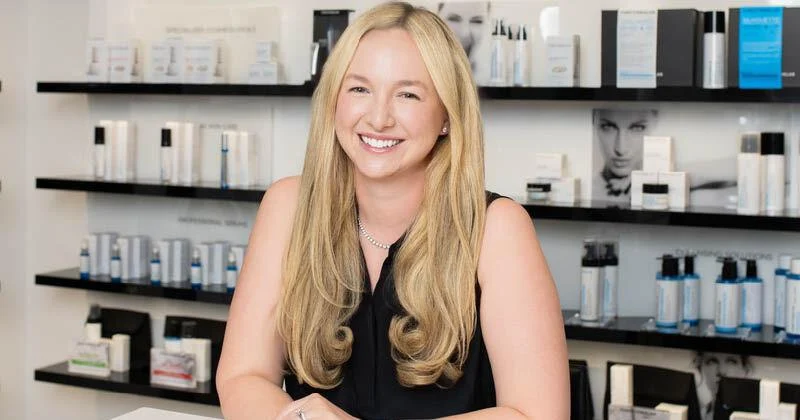By Unknown
Copyright thestar

Choosing the right laser treatment and the right clinic can feel a lot like going shopping for a big event. You know what you need and the look you want, but sorting through the huge array of options can feel, well, overwhelming.
It doesn’t have to be. Take The Kit’s recent visit to Dermapure, a nationwide network of clinics specializing in medically supervised aesthetic care, with more than 64 locations and close to 100 medical doctors across Canada. We met with a clinician, who walked us through our skin concerns, goals and options, and after careful consideration, together we decided on a Clear + Brilliant laser to treat dark spots. From the moment we stepped into the office to the surprisingly gentle treatment (we only felt some tiny prickles—thank you, numbing cream!) to the detailed after-care instructions, we knew we were in expert hands.
“You shouldn’t be expected to be your own doctor or know what laser is best for you,” says Dr. Beatrice Copps, a Toronto-based medical and cosmetic dermatologist at Dermapure. If you’re curious about procedures but unsure where to start, you can visit dermapure.com to book a free consultation with one of their expert consultants.
In the meantime, here’s how our own experience went, and what we learned about how to get the best laser treatment.
1. Time your laser treatments to the season
While there is no right or wrong age to get laser, there is a right time—and that time is now. “Fall is a logical time because people are recovering from the summer and potential sun damage,” says Dr. Copps. More crucially, she adds, as the days get shorter and cooler, “you’re not as likely to have as much sun exposure.” That translates to safer recovery and better results.
Consider Clear + Brilliant, the treatment we tried. This laser comes in two wavelengths, and we went with Perméa, the more superficial of the two. It works by creating “micro-perforations” in the skin in a controlled setting, providing an exfoliation effect while spurring the skin to repair itself. The result: pigment spots essentially fall off, and your skin makes fresh, new cells. (The laser has another setting that goes deeper to stimulate collagen, helping to smooth wrinkles.) If we went to the beach right after getting lasered, we could get sun damage while our skin is trying to recover. A general rule of thumb, advises Dr. Copps, is to only get laser when your complexion is as close as possible to your winter skin colour. For certain lasers, that means no self-tanning either; in some cases, the laser could mistake the pigment of the tanner for your actual skin tone.
2. Age really is just a number
“How old you are is not necessarily a main predictor for what treatments you need,” explains Dr. Copps. The health of our skin is influenced by so many things, from genetics to environmental factors, like sun damage and pollution, to stress and diet. But no matter what your concern, early intervention is key. “If you’re concerned with pigmentation, the earlier you notice pigmentation, the easier it is going to be to stay on top of it. The same with fine lines. It’s more about the issues that you’re trying to target.”
3. Overnight fixes do not exist
Our clinician, Marianne, kindly laughed when we joked about leaving the clinic looking 10 years younger—a quip she’s probably heard a thousand times before. But the truth is, many laser treatments, including Clear + Brilliant, aren’t one and done. That’s why they are called fractional lasers, because they’re only treating a fraction of your skin at a time.
“When you’re using a laser that will have little downtime, it requires more treatments to get a similar result,” says Dr. Copps. On the plus side, we didn’t have to hide out for a week while our face healed—instead, we looked a bit rosy for just a day or two, as if we’d gone skiing in the Alps with no sunscreen. Then, people started commenting on how glowy we looked. Depending on the laser and your skin type, treatment should be repeated up to six times, with sessions spaced four to eight weeks apart.
4. Do your research
If someone does try to convince you that you’ll have newborn skin after one treatment, run. Look for a clinic with medical oversight. Dermapure, for example, has a medical board, in addition to having a medical director in each clinic, as part of its commitment to providing safe, evidence-based aesthetic care. “We’re not in the business of following trends. We want to make sure every treatment we do is science-backed,” says Dr. Copps. “As a doctor, and as a patient, it’s very nice to know everyone’s on the same page. When you go to any Dermapure clinic, you can expect to receive a certain degree and quality of care.”
5. The best defence is a good offence
Those dark spots the Clear + Brilliant laser sloughed off? Even though we’ve been diligent about staying out of the sun, that excess pigmentation was from years of damage and earlier bad habits. “It’s compounded. You don’t wake up with a clean slate every year,” says Dr. Copps. “But the more you protect your skin, the less damage you’re accumulating, and the less in-office maintenance you’ll have to do.” What does that protection look like? “Sunscreen, sunscreen, sunscreen,” she says. One more expert tip: layer a medical-grade vitamin C serum under your SPF to supercharge its strength and broaden its protection.
This content was created by The Kit; Dermapure funded and approved it.



